In its first foray into fashion in 73 years, MoMA honours world-changing wardrobe
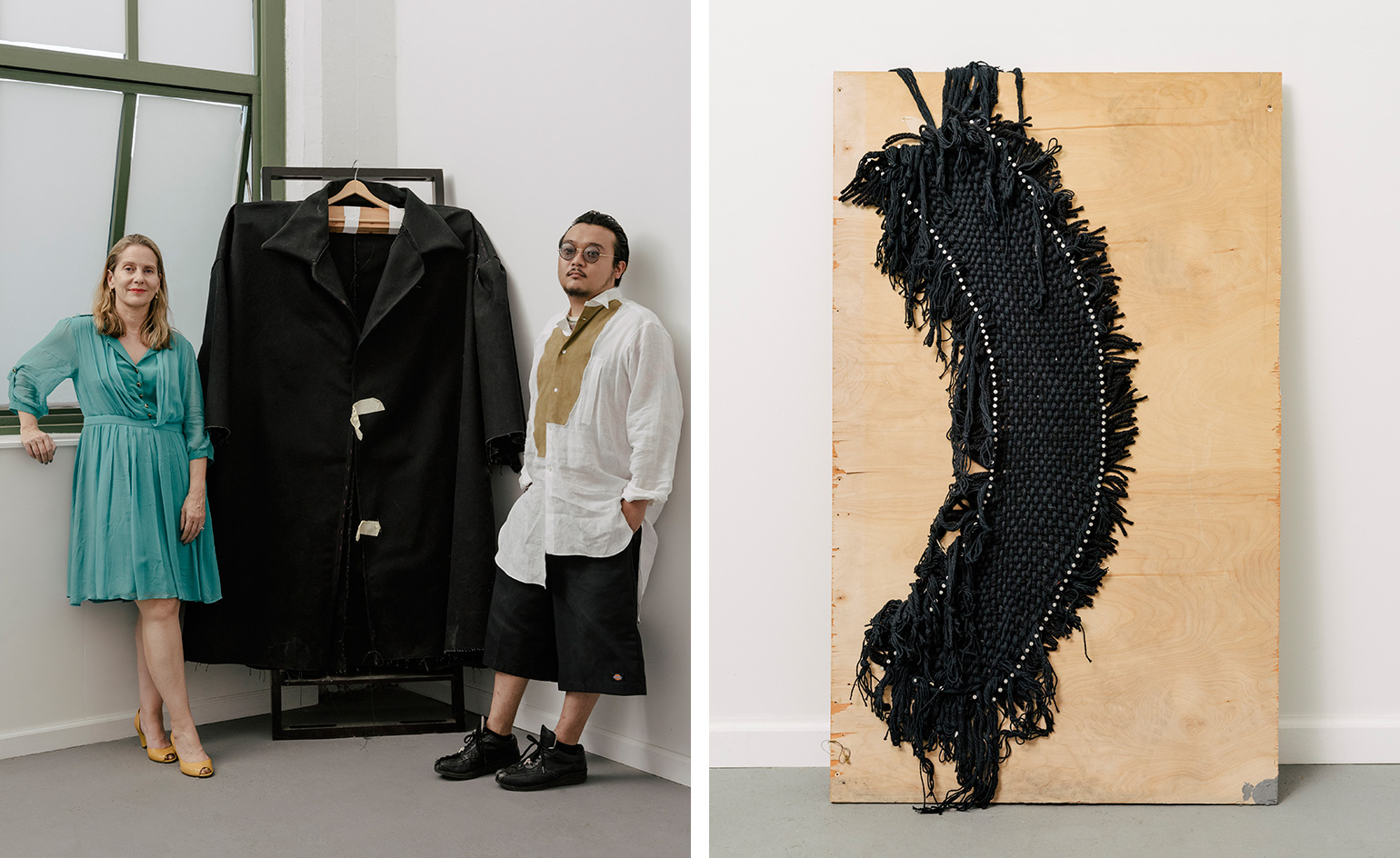
Laura Hawkins
In 1944, the Museum of Modern Art in New York staged its first fashion exhibition, ‘Are Clothes Modern?’. Put together by architect and curator Bernard Rudofsky, the show explored attitudes towards clothes at a time when soon-to-be-outmoded traditions still prevailed, from superfluous pockets and buttons to rigid female silhouettes.
Despite its forward-thinking provocations, MoMA has not devoted another exhibition to the field of fashion since. Until now, that is. This month, the museum presents ‘Items: Is Fashion Modern?’, a comprehensive exploration of fashion design that considers the effects specific garments and accessories have had on society. Curated by Paola Antonelli, MoMA’s senior curator in the department of architecture and design, and curatorial assistant Michelle Millar Fisher, the show brings together 111 iconic fashion typologies from the last century that have had a universal and lasting impact.
‘When I started at MoMA 23 years ago, I noticed that there was no fashion and I started asking around why,’ says Antonelli. ‘I got many explanations about the fact that modern design is timelessness and fashion is ephemeral, but it didn’t make too much sense to me. So I began keeping a running list that I called “garments that changed the world”.’ About three years ago, MoMA director Glenn Lowry suggested Antonelli make a show out of that list.
‘Items’ brings together sartorial archetypes such as the biker jacket, the white T-shirt and the bikini. Some are represented by multiple examples to give a sense of evolution: there are little black dresses by Dior, Versace and Rick Owens, and suits by Armani and Thom Browne. Added to these are contemporary icons such as Adidas’ Superstar trainers, Levi’s 501 jeans and Yves Saint Laurent’s Le Smoking tuxedo, all chosen for their revolutionary impact. Antonelli’s anthropological approach considers each item’s cultural, technological, economic, political and aesthetic relevance.
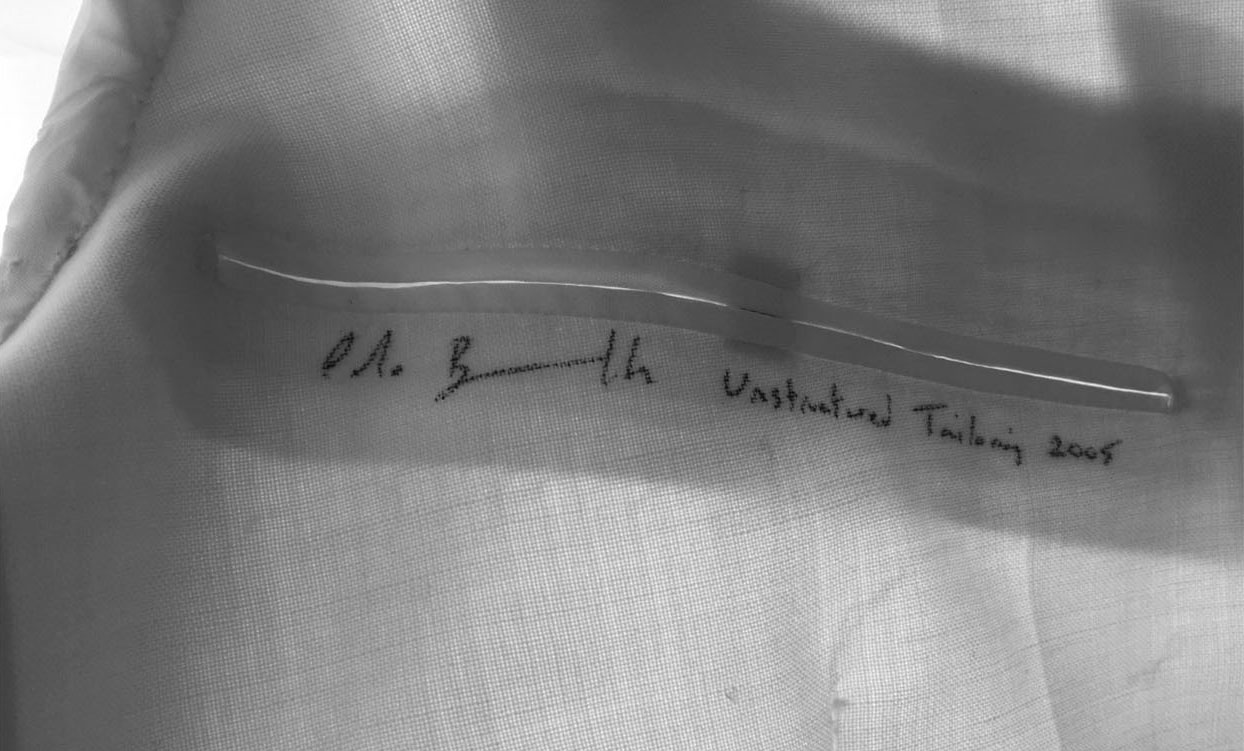
A close up of Carlo Brandelli's 'Unstructured Tailoring'. This jacket from 2005 features in the exhibition
On our sartorial stop-off, three particular pieces caught our eye. Firstly, a transparent, slim jacket by British fashion designer and artist Carlo Brandelli made under his former label Squire; it is a piece that forms part of his seminal ‘Unstructured Tailoring’ cannon. The other two are part of the 19 commissioned prototypes for the exhibition, which riff on the designs of their predecessors – an oversized take on the guayabera shirt by the New York-based designer Ryohei Kawanishi, and a swirling 3D interpretation of the utilitarian jumpsuit, by London-based Richard Malone.
Brandelli gained renown in the nineties for his skinny and lightweight interpretation of Savile Row suiting. At Squire, he deconstructed the blazer silhouette exhibited at MoMA to its basic external form, removing its conventional inner fabric and horse hair linings, to create an unstructured sheath-like garment without additional internal weight. His designs anticipated the skinny suiting that was the silhouette du jour on the men’s catwalks in the early noughties.
‘I was always thinking about form, silhouette and function,’ Brandelli says. ‘Suits had always been so heavy. The first steps at Squire were to eliminate details... a process of reduction and abstraction as a reaction to the baggy long tailoring that was only available. I’ve always fused ideas of art process into my work, and perhaps this is why such a significant design was developed.’
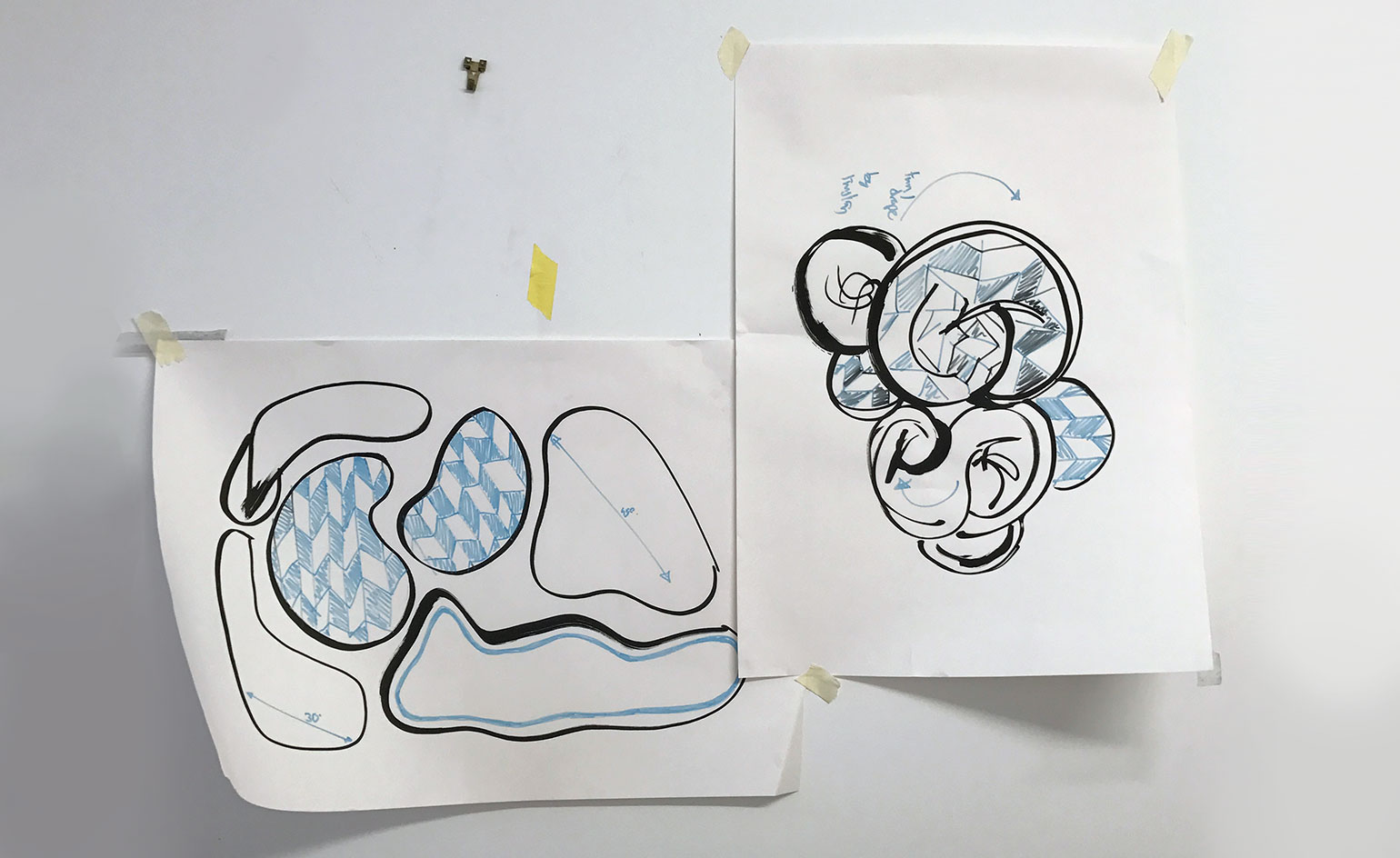
Sketches for Richard Malone’s exclusively commisioned jumpsuit
Flourishing fashion designer Richard Malone was made aware of the significance of his commissioned design when Paola Antonelli sent him a selection of essays about the symbolic importance of the jumpsuit. ‘The shape goes back to Constructivist Russia,’ the Central Saint Martins alumnus explains. ‘It was a non sexualised uniform for everyone, about covering your body in order to function.’
Malone has created a fantastical interpretation of a functional garment – a swirling jumpsuit in his signature optical illusory patterns, complete with a 3D body and sleeves, sculpted using coils of wire. The Irish designer grew up working on building sites in Wexford, where he became familiar with workwear garments. His design has a more expressive and architectural flair. Due to the intricate nature of the forms he creates, Malone doesn’t sketch his designs in the conventional sense, but creates swirling patterns on paper, some of which he sent onto Antonelli’s teams during the creation process of his commission. He then notes how his designs conform to the body, ‘you get more unusual solutions and surprising silhouettes’, he says.
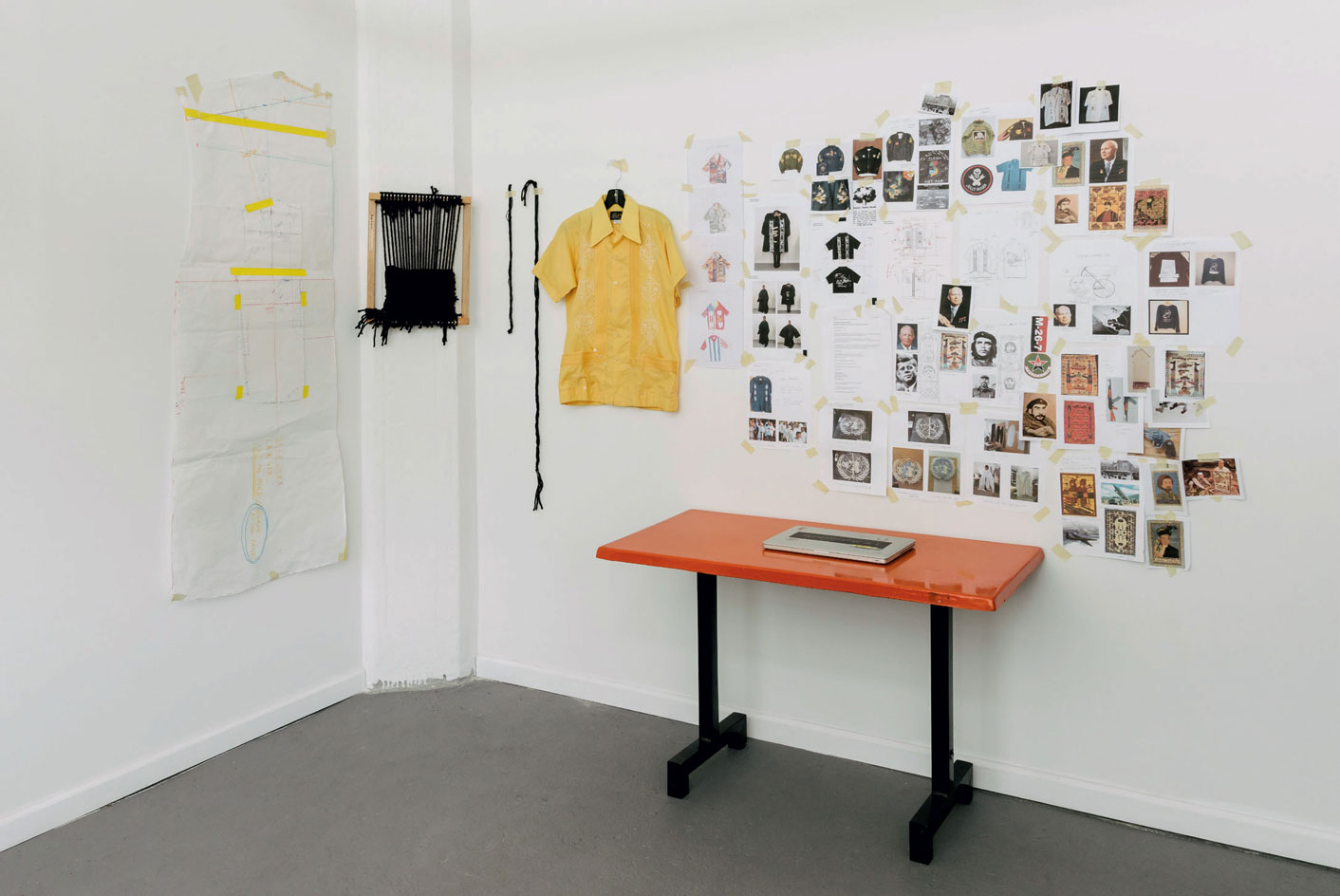
Inspiration for Kawanishi’s politically charged guayabera shirt. The yellow shirt is a vintage example used as guidance for his design.
Another Central Saint Martins alumni, Ryohei Kawanishi’s take on the guayabera shirt – a Central American and Caribbean staple that has become a symbol of immigration in the US – is not only oversized, but also festooned with politically charged embroideries arranged in patterns inspired by Afghan war rugs, Vietnam War souvenir jackets and Cuban media. ‘The guayabera shirt is said to be Cuban, but as a stereotype image, I’ve seen it a lot in American war movies,’ says Kawanishi. ‘I tried to find a way to approach the political scene and create a dialogue with those issues.’
The pieces are examples of MoMA’s intention to spark a deeper understanding of ordinary items we see every day. ‘It’s really a design show in which objects give you a chance to not only think about aesthetics, style, politics and anthropology, but also just the way we live,’ Antonelli says.
A version of this article is featured in the October 2017 issue of Wallpaper* (W*223)
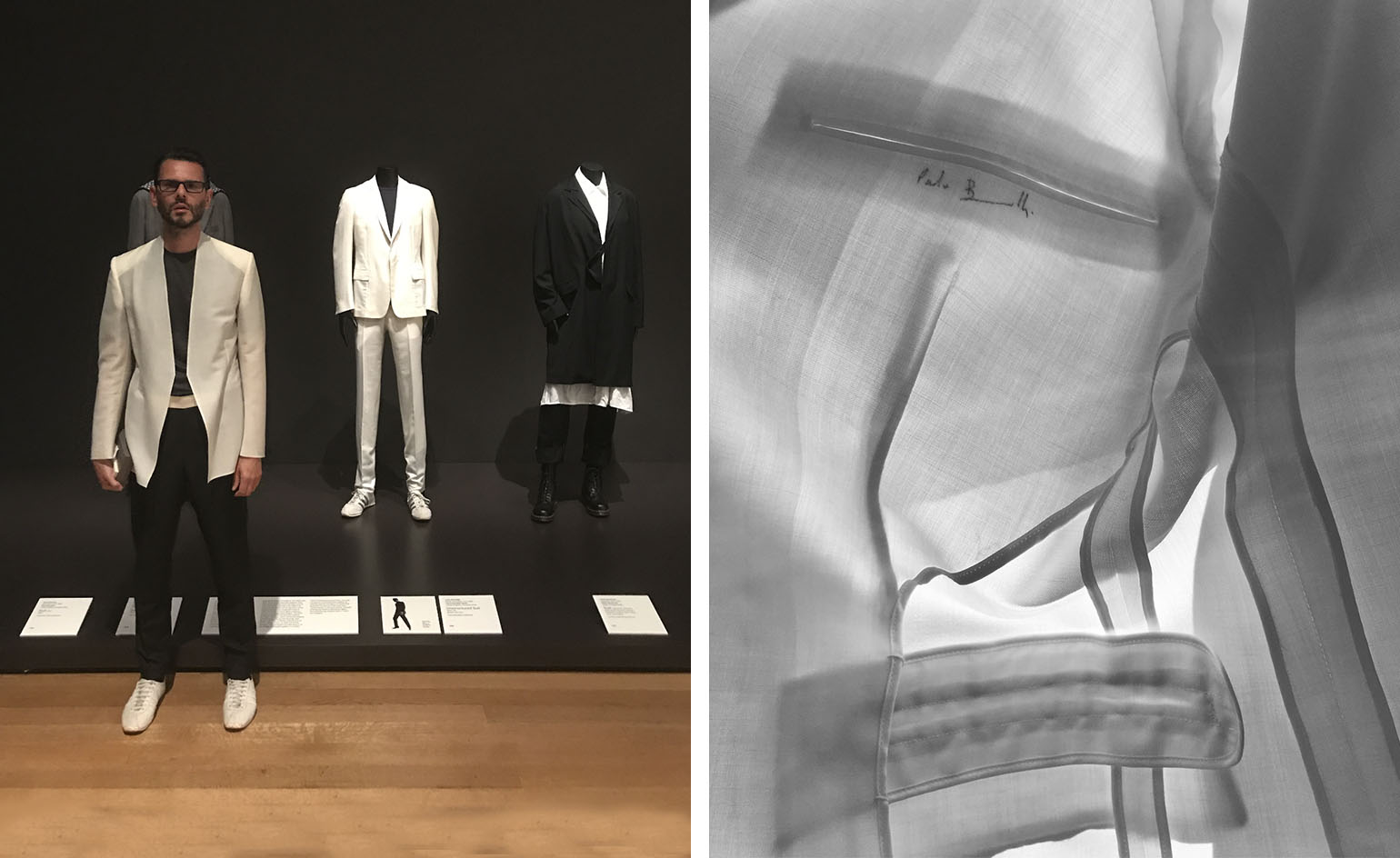
Left, designer and artist Carlo Brandelli wearing a 2017 version of his unstructured suit jacket, in front of one of his original 2005 designs on display at the MoMA exhibition. Right, detail shot of the jacket
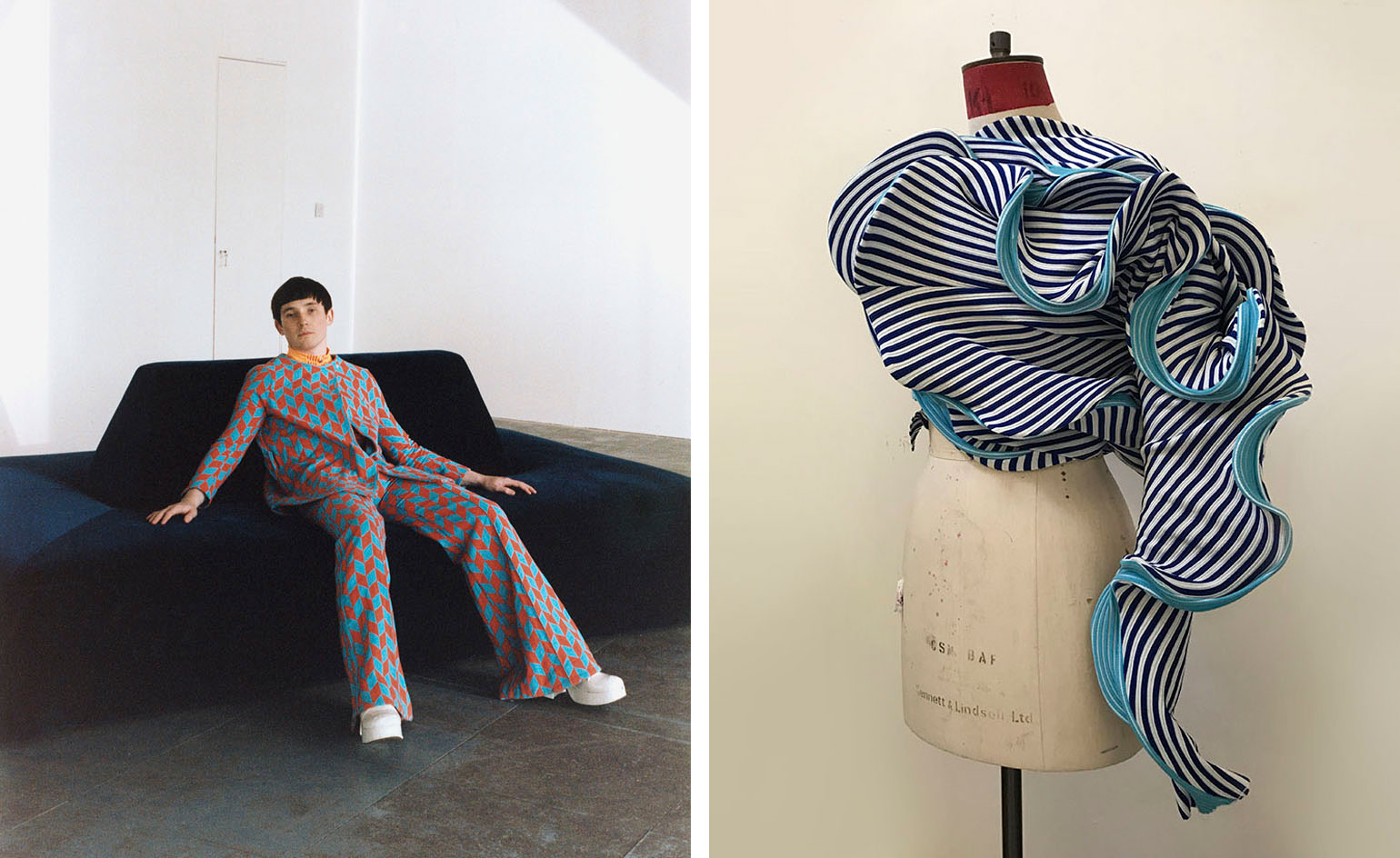
Left, designer Richard Malone. Right, a mid-production shot of his sculptural jumpsuit
INFORMATION
‘Items: Is Fashion Modern?’ is on view from 1 October until 28 January 2018. For more information, visit the MoMA website, the Carlo Brandelli website, the Richard Malone website and the Ryohei Kawanishi website
Wallpaper* Newsletter
Receive our daily digest of inspiration, escapism and design stories from around the world direct to your inbox.
ADDRESS
MoMA
11 W 53rd Street
New York NY 10019
Pei-Ru Keh is a former US Editor at Wallpaper*. Born and raised in Singapore, she has been a New Yorker since 2013. Pei-Ru held various titles at Wallpaper* between 2007 and 2023. She reports on design, tech, art, architecture, fashion, beauty and lifestyle happenings in the United States, both in print and digitally. Pei-Ru took a key role in championing diversity and representation within Wallpaper's content pillars, actively seeking out stories that reflect a wide range of perspectives. She lives in Brooklyn with her husband and two children, and is currently learning how to drive.
-
 The Subaru Forester is the definition of unpretentious automotive design
The Subaru Forester is the definition of unpretentious automotive designIt’s not exactly king of the crossovers, but the Subaru Forester e-Boxer is reliable, practical and great for keeping a low profile
By Jonathan Bell
-
 Sotheby’s is auctioning a rare Frank Lloyd Wright lamp – and it could fetch $5 million
Sotheby’s is auctioning a rare Frank Lloyd Wright lamp – and it could fetch $5 millionThe architect's ‘Double-Pedestal’ lamp, which was designed for the Dana House in 1903, is hitting the auction block 13 May at Sotheby's.
By Anna Solomon
-
 Naoto Fukasawa sparks children’s imaginations with play sculptures
Naoto Fukasawa sparks children’s imaginations with play sculpturesThe Japanese designer creates an intuitive series of bold play sculptures, designed to spark children’s desire to play without thinking
By Danielle Demetriou
-
 Met Gala 2025 and ‘Superfine: Tailoring Black Style’ exhibition: everything we know so far
Met Gala 2025 and ‘Superfine: Tailoring Black Style’ exhibition: everything we know so farEverything Wallpaper* knows about the Met Gala 2025 so far – from the just-revealed dress code to the exhibition theme and A-list co-chairs
By Anna Solomon
-
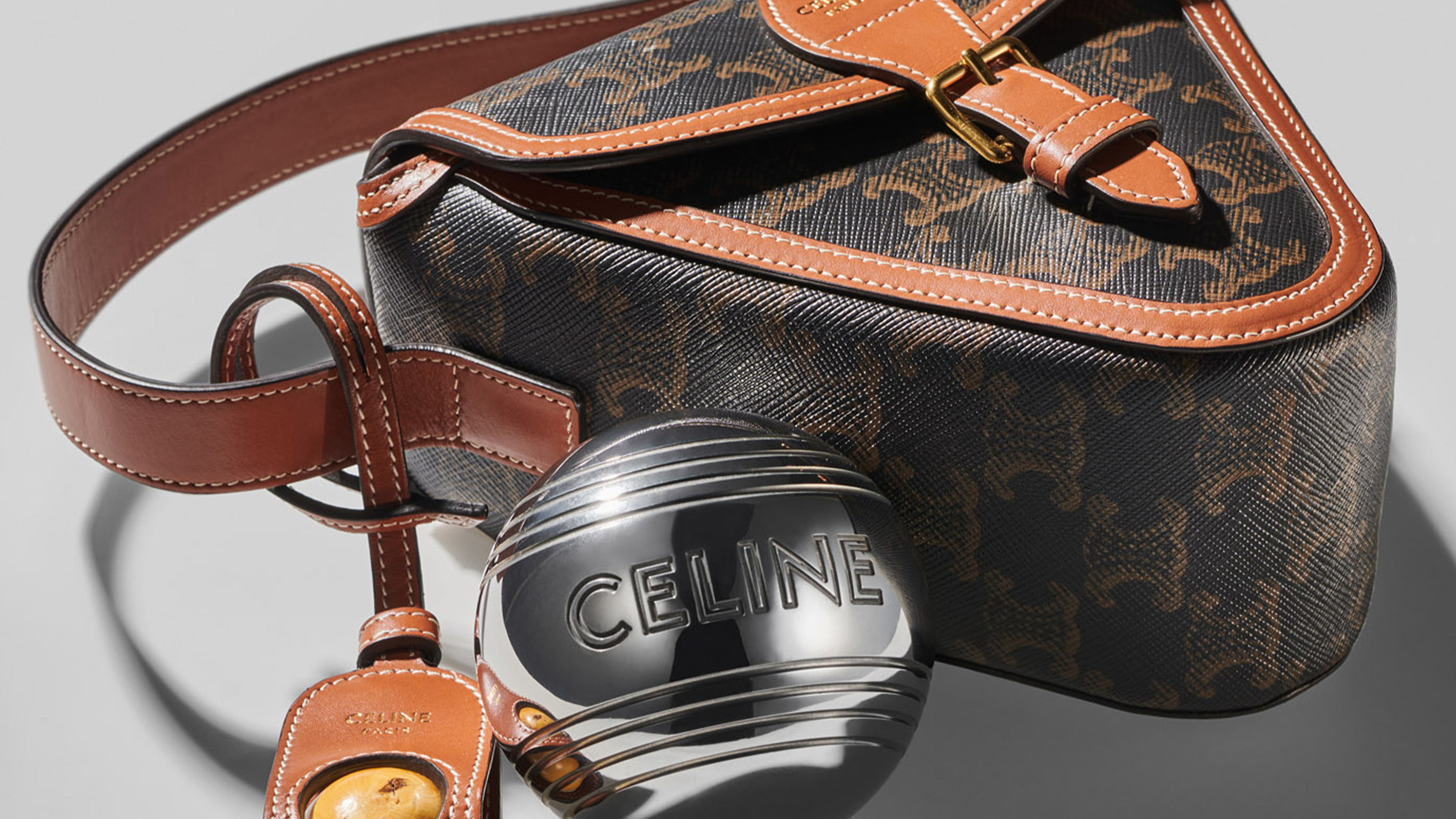 Summer games, from pétanque to pool floats, get a fashionable spin
Summer games, from pétanque to pool floats, get a fashionable spinFrom a luxurious pétanque set to pool floats and playing cards, summer games and toys from the world’s best-known fashion houses
By Jack Moss
-
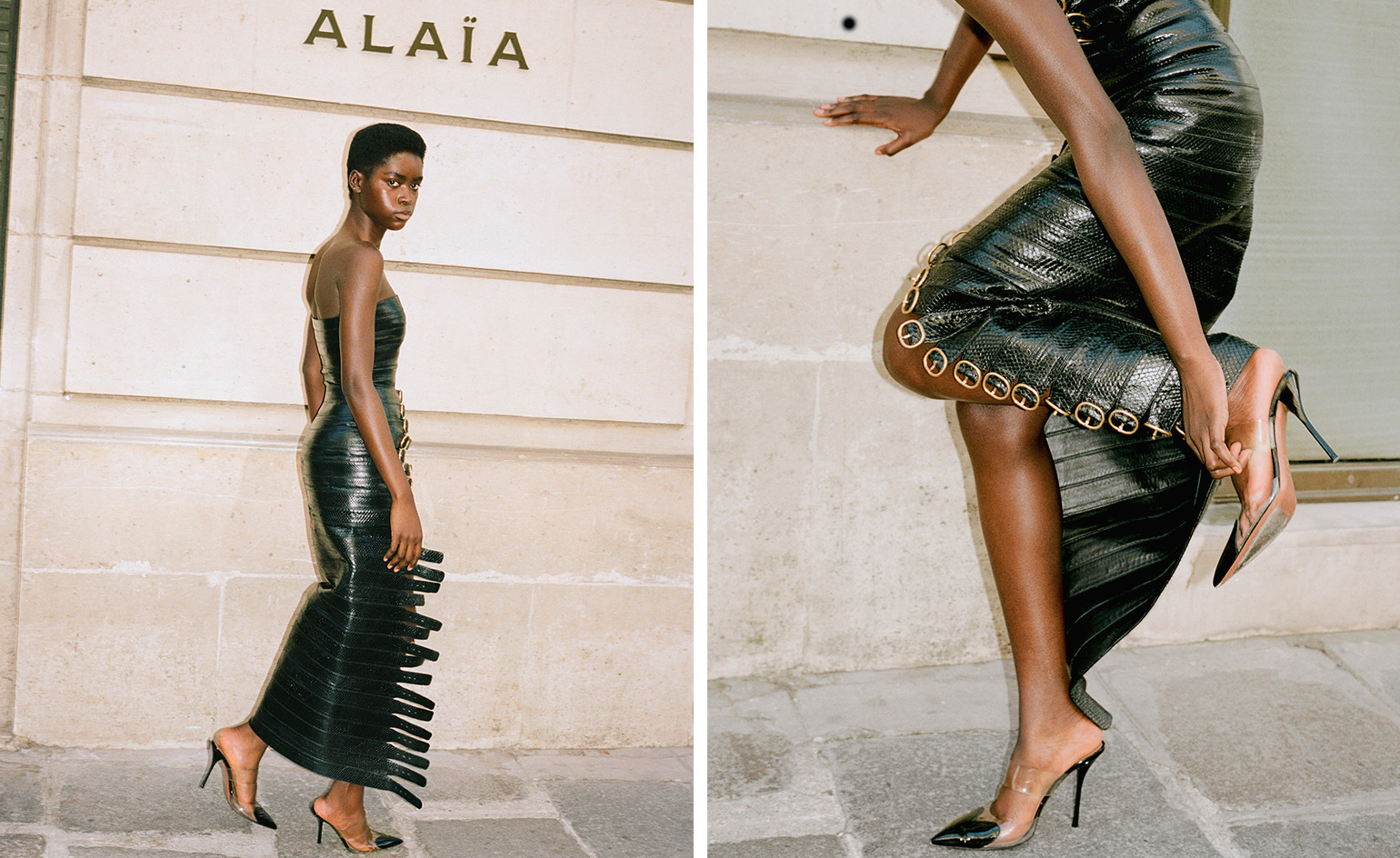 ‘Modern beauty’: Pieter Mulier on his new vision for Alaïa
‘Modern beauty’: Pieter Mulier on his new vision for AlaïaAs creative director of Alaïa, Belgian designer Pieter Mulier honours the timeless vision of the maison’s founder while rewriting the past anew. Here, speaking to Jack Moss, he tells the story behind his first year at the house
By Jack Moss
-
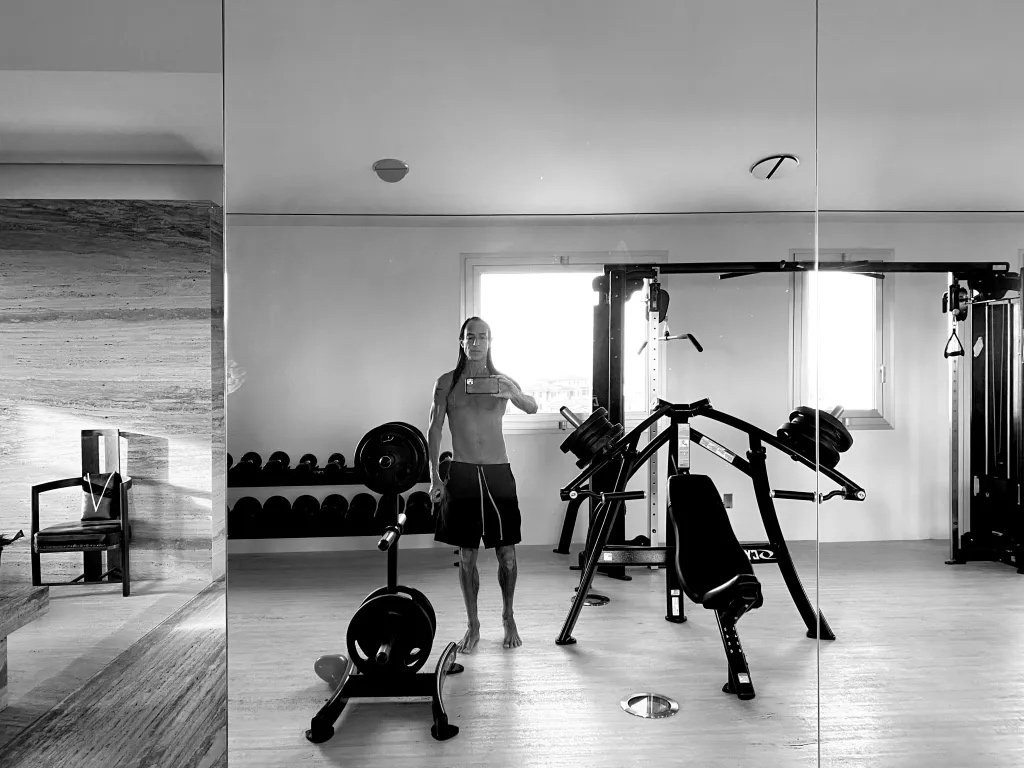 At home with Rick Owens
At home with Rick OwensAs California-born fashion designer Rick Owens is named one of the Wallpaper* USA 300 – a celebration of creative America – we revisit our conversation with Owens in the run-up to his S/S 2023 menswear show last year
By Jack Moss
-
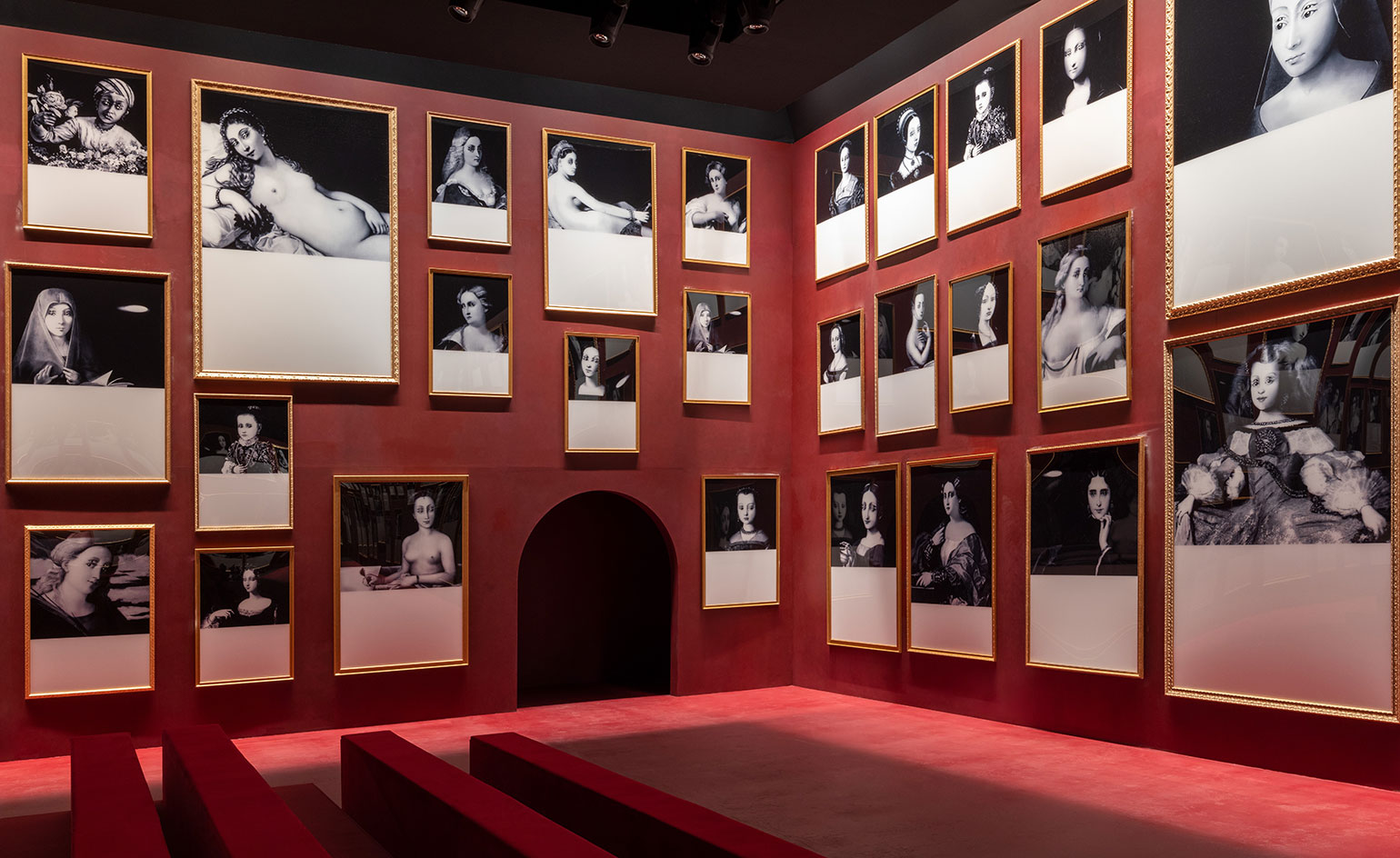 Mariella Bettineschi’s feminist artworks survey guests at Dior A/W 2022 show
Mariella Bettineschi’s feminist artworks survey guests at Dior A/W 2022 showAs guests gathered at Dior’s A/W 2022 womenswear show venue in Paris, sets of duplicated eyes stared down at them from the artworks of Mariella Bettineschi
By Laura Hawkins
-
 Paris Fashion Week A/W 2022: Chanel to Miu Miu
Paris Fashion Week A/W 2022: Chanel to Miu MiuIn this extended report, Wallpaper* updates you live from Paris Fashion Week A/W 2022 shows, with rolling coverage as runway events unfold
By Jack Moss
-
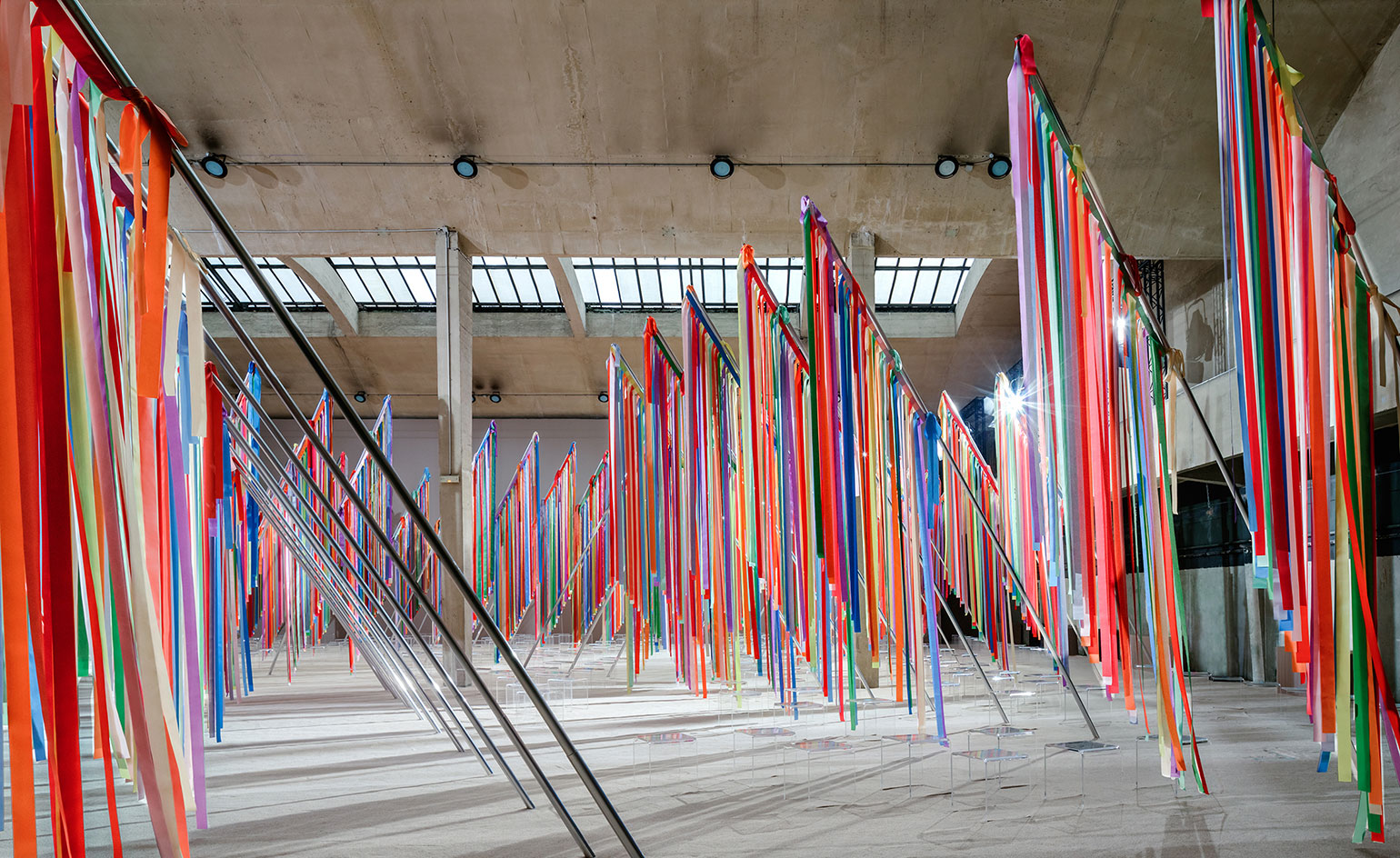 Scene-stealing runway sets from A/W 2022 menswear shows
Scene-stealing runway sets from A/W 2022 menswear showsA Kubrickian space odyssey at Prada; a recreation of the Pont Alexandre III in Paris at Dior; and colourful, artist-created flags at Loewe: explore the best runway sets from the A/W 2022 menswear shows
By Laura Hawkins
-
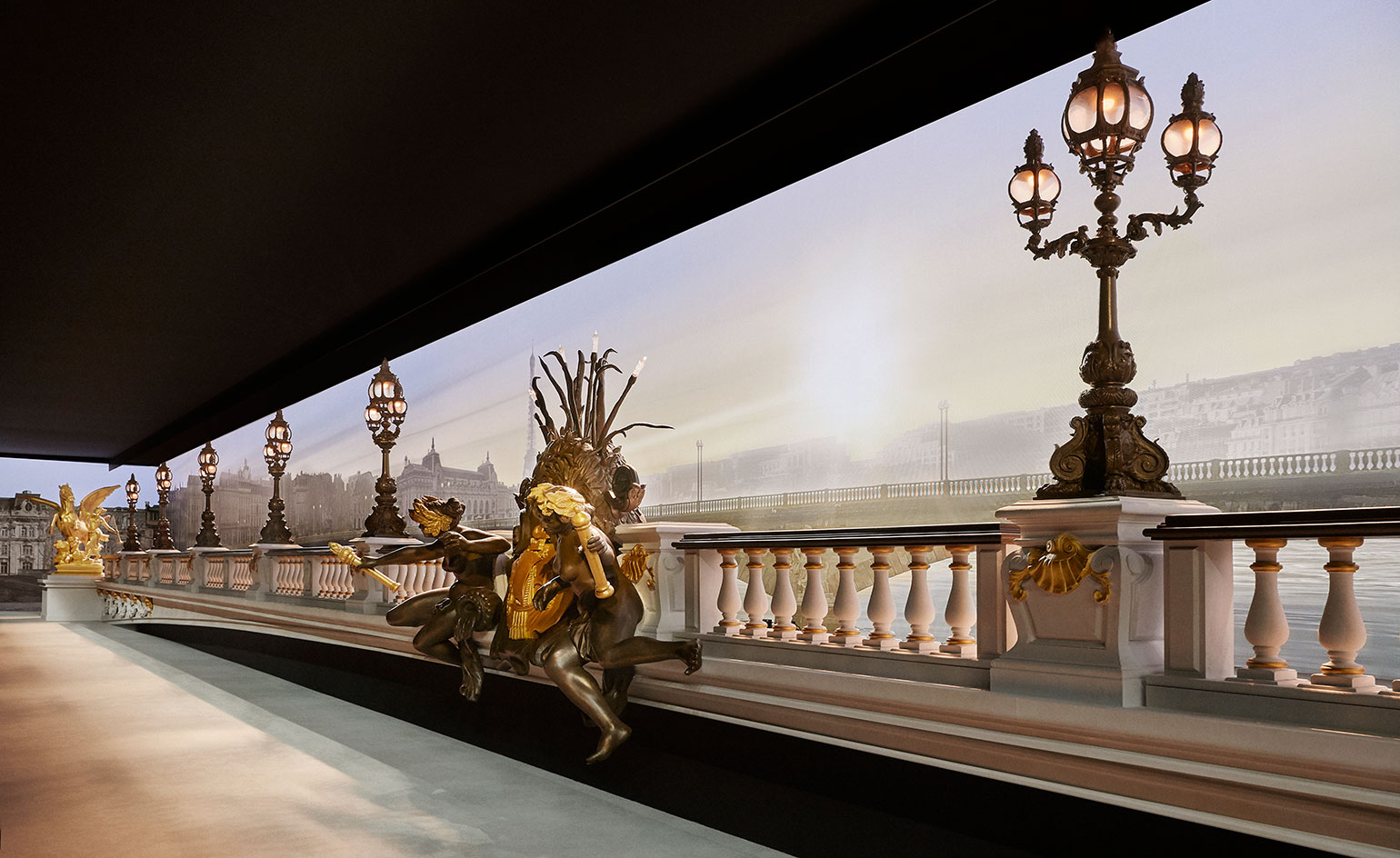 Dior recreates Paris bridge, Pont Alexandre III, for A/W 2022 show
Dior recreates Paris bridge, Pont Alexandre III, for A/W 2022 showDior recreated Paris’ landmark bridge, Pont Alexandre III, for its A/W 2022 menswear show, which took place on 21 January 2022, the date of Christian Dior’s birthday
By Laura Hawkins